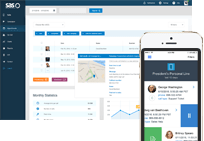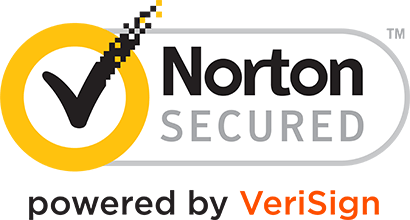- Log In
- Support
- Company
- Contact Us
- Live answers @ 1-888-532-4794
How to prepare your small business for disasters or pandemics like the Coronavirus
As we’ve seen over recent weeks, a global outbreak is overwhelming. Schools and businesses are halting their public interactions in an attempt to stop the spread of COVID-19. While no one likes planning for an emergency, being prepared is essential. Whether you’re using an answering service every day or just as a back up plan, you’ll want to follow these simple preparedness steps:
#1. Make sure you have call forwarding
When you get started with an answering service, you’re given a phone number to forward your calls to. You’ll want to make sure your phone has the capability to forward. Since this is a feature controlled by your phone provider, please check with them first. In addition, you and your team should be familiar with how to forward, and what number to forward to. Typically, you would dial *72 on your phone, followed by the number you wish to forward to. However, it may change based on provider or your phone system. We recommend doing a couple test runs with your team on forwarding (doesn’t have to be to your answering service) so that everyone is comfortable and familiar with the process. Forward your office lines to someones cell phone or to another line just to make sure it’s working and ready when you need it.
It’s also a good idea to check with your provider to see if you can remotely forward your calls. In the case of a disaster that prevents you from physically being in your office, like a hurricane or a tornado, check with your phone company to see if they can forward your calls for you.
#2. Set up basic message taking
If you’re using an answering service as an emergency back up plan, call handling doesn’t need to be complex. In the event of an emergency, it’s more important that you’re getting the message than having your receptionist mimic your own office protocols exactly. Gathering a basic name, number and message is the best way to get callers on and off the phone as quickly and as efficiently as possible.
If you’re used to using your answering service on a day to day basis, see if they can input a temporary protocol that involves basic message taking so that you don’t have to revamp your whole script. Then, when everything settles down you can go back to your normal procedures.
#3. Have information readily available to activate your account quickly
In the event that you don’t have an account set up with a virtual receptionist provider, you’ll want to make it as easy as possible for them to set one up for you quickly. Here are some things to have readily available so you can activate an account with little friction:
- Your credit card information: An answering service is going to need your credit card or bank account information to get you set up. Even if you on-board during a free trial period, to make sure your service stays active after the trial, you’ll want to make sure you have a valid payment method on file. Make sure more than one person in your office has access to your office payment methods.
- Your call handling: If you’re rushing a setup, a virtual receptionist will just be able to take basic information like name, email, phone number, and message. You’ll need to decide where you want these messages sent to and how. Setting up a distribution email address on your side that sends to multiple employees is a great idea.
- Other contact data: In addition to receiving your messages, call transfers are usually fairly simple components that can be added to any answering service script. If you’re looking to have your calls transferred to your office, make sure you know what number, or numbers, your virtual receptionist will be transferring calls to.
#4. Include high impact FAQs
Whether it’s an outbreak, a data breach, a product recall or some other type of event that disrupts life on a massive scale, customers are going to want to know your business’s continuity plan. In order to minimize the amount of call backs you and your team have to handle, equip your answering service with the basic questions and responses that may come up. Offer just enough information to inform the caller, but not too much information that extends the call with more questions that the receptionist isn’t equipped to handle.
If your business is closed, try and provide estimates of when you’ll re-open, or include details of what’s being done remotely to help business run as usual. This is especially important for those customers who rely on your business each day.
#5. Create a custom recorded greeting for the specific issue
If customers are calling to see if you’re still open, adding a custom pre-recorded greeting during this time is a helpful way to answer that question without eating up operator minutes. For example, providing your service with a recording that says “Thank you for calling The Burger Joint. Our dining area will remain closed until further notice, but we are open for all take out requests. For other assistance, please stay on the line and an operator will be with you in a moment” will give most callers the information they’re looking for while still offering other callers a live agent to speak with.
A telephone answering service is an amazing way for your business to stay alive in an emergency. Services like Specialty Answering Service are here for you when you need us most.
Categories
- Advice (32)
- Answering Service 101 (18)
- Best Practices (10)
- Call Center Jobs (6)
- Call Center Software (20)
- Comparison (2)
- Customer Service (30)
- Funny (31)
- Holidays (19)
- Industry Hacks (19)
- Infographics (53)
- International (1)
- Medical (8)
- News (12)
- Phone Etiquette (2)
- Phones (14)
- Pricing (8)
- Quizzes (3)
- Receptionist (11)
- SAS Products (29)
- Scripting (4)
- Services (5)
- Small Business (25)
- Starting Up (7)
- Tips and Tricks (19)
- Uncategorized (1)
- Videos (19)
- Workplace (6)
Recently writen
- Call Center Script Best Practices: Advanced Script Block Tips to Optimize Your Answering Service
- January 2025 Release Notes – Adjustments to Call Details Timeline, New Scripting Updates, Live Transcription, and more!
- April 2024 Release Notes – Voicemail Greetings, Ability to Access Websites With a Username and Password, and more!
- March 2024 Release Notes – New Add-On, Settings Revamp, and more!
Follow Us
How about a demo?
We'll show you how our web portal works and answer any questions you have about SAS.
Schedule a demo







